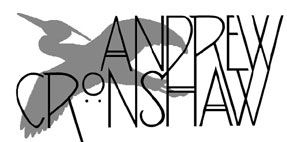
- Andrew Cronshaw website -
- Andrew Cronshaw MySpace -
- Cloud Valley Music website -
- Andrew Cronshaw website -
- Andrew Cronshaw MySpace -
- Back to Reviews Introduction page -
Written in
fRoots
issue 321, 2010
BATUKO TABANKA
Djunta Mô
PAI PAI-W-09/050 (2009)
This is a prime example of the eye helping the ear; the inclusion in its
substantial book-type pack of a DVD makes this already attractive-sounding CD a
lot more understandable and interesting.
Here’s the story.
Some Cape Verdean women who in the early 1970s
emigrated to Spain and settled in the fishing port of Burela, on the north coast
of Galicia, got together to continue the Cape Verdean tradition of batuko, in
which groups of women sit singing lively songs together, usually in
call-and-response, or jump up for giggling bum-wiggling dance, as their vocals
sail freely over a brisk ‘bom-paka-ta’ 3/4 rhythm from hand-slapped batukos,
small plastic or leather-covered wads of cloth laid on their laps.
In Galicia there’s a long tradition of women singing
together in pandeiretera groups, accompanying themselves on tambourines
(pandeiretas), sometimes to a similar rhythm to batuko. In the recording project
Djunta Mô (meaning something like ‘all help together’ in the Cape Verdean
Mandinka-Portuguese creole) the two traditions come together; the Batuko Tabanka
group is joined by singers and instrumentalists mainly from Cape Verde and
Galicia, about a dozen from each.
The recordings were done with equipment rigged up in
hotel rooms on the largest Cape Verde island, Santiago, and in a Galician
studio. Among the Cape Verdeans are popular singer-guitarists Tcheka and Vadú,
and the elderly but animated gold-toothed versifier Ntoni Dente D’Oro, whose
vocals are a kind of sing-rap; among the Galicians are singers Uxía and Mercedes
Peón, both fine exponents of the pandeiretera tradition, Berrogüetto drummer
Isaac Palacín and ex-Milladoiro harpist Rodrigo Romaní and gaiteiros and wind
players including Xosé Manuel Budiño.
The DVD presents a 52-minute documentary that opens
with some useful historical background to Cape Verde’s history and goes on to
give a good sense of the context and people involved in the making of the album,
including visits to elderly traditional singers across the island. Voice-over
and subtitles are in Galego, Castilian Spanish and Portuguese, but the visuals
are vivid and a non-speaker would get the gist pretty well. It also contains
concert footage, of the group plus some of the guests in the dusty centre of
Cape Verde’s old capital Cidade Velha and in a little house of culture in
today’s capital Praia, videos of two tracks and a 5.1 surround audio recording.
Not all the Galician musicians were present at the Cape
Verde recordings, but Uxía is among those who were and she’s seen in the films
joyfully connecting the traditions, in a pandeiretera song and a morna with the
batuko group and instrumentalists including Cape Verdean violinist Nho Nanu. Of
the Cape Verdeans Ntoni Dente D’Oro, who seems to be something of a local
legend, is particularly prominent in the footage.
The resulting audio album is often quite a dense,
muscular layering of overdubs of instruments and percussion, but it bursts with
life. Batuko Tabanka’s energetic solo and answering group vocals are the
over-riding sound, joined by sympathetic interjections from the other vocalists
including the characteristic warmth of Uxía and wildness of Peón.
It’s joyfully infectious music full of melodic
ear-worms, varied voices, sounds and rhythms that expands on the simple batuko-slapping
and sometimes moves away from its prevailing 3/4 into other local song-styles,
making a celebration of Cape Verdean social music-making and cross-cultural
communication with one of the islanders’ emigration destinations that’s likely
to generate considerable international airplay and draw attention abroad and at
home to the value of the islands’ less obviously commercial musics. One would
imagine it’s a dream-fulfilment for the group too, and an encouragement to
others.
www.pai-musica.com
© 2009 Andrew Cronshaw
You're welcome to quote from reviews on this site, but please credit the writer
and fRoots.
Links:
fRoots - The feature and
review-packed UK-based monthly world roots music magazine in which these reviews
were published, and by whose permission they're reproduced here.
It's not practical to give, and keep up to date,
current contact details and sales sources for all the artists and labels in
these reviews, but try Googling for them, and where possible buy direct from the
artists.
CDRoots.com in the USA, run by
Cliff Furnald, is a reliable and independent online retail source, with reviews,
of many of the CDs in these reviews; it's connected to his excellent online magazine
Rootsworld.com
For more reviews click on the regions below
NORDIC
BALTIC
IBERIA (& islands)
CENTRAL & EASTERN EUROPE, & CAUCASUS
OTHER EUROPEAN AMERICAS OTHER, AND WORLD IN GENERAL
- Back to Reviews Introduction page -